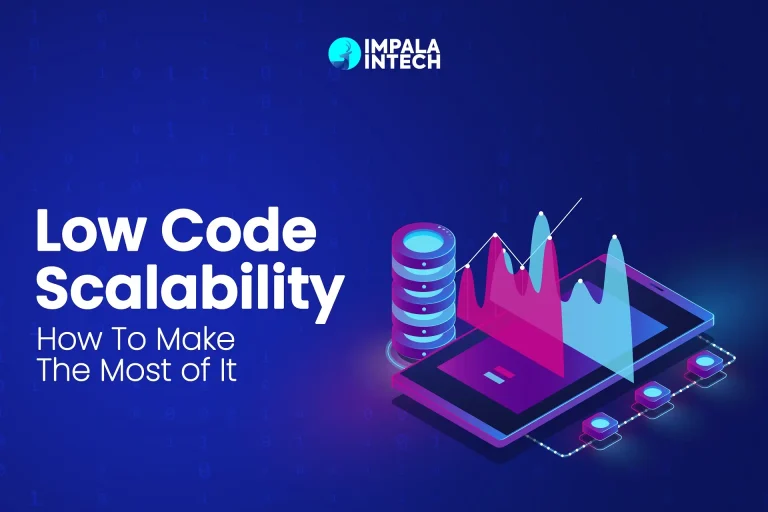

All startups require an actual product to gain the attention of its target audience, but a startup product doesn’t always have to be a complete one. You can start with a minimal release to gain the attention of your targeted user base.
You can continue improving the product and user experience with their feedback in the long run.
The terms we will discuss today are MMP, MLP, MDP, and MAP. Though sounding different, they all lead back to the same thing: An MVP.
These terms are just indications of different significant characteristics of the MVP. Though they are represented as different iterations, these are all the same.
Before starting the discussion, let’s look at the stages of startup to get an idea about where these different iterations fit.
Stages of Startup
We’ll start with the stages of startups to give you a clearer idea.
1. Identify The Market Needs
Not everyone will buy what you’re selling. When you create a product with no market demand, it counts as a net loss for your business.
Always start with identifying what the market demands and gathering customer knowledge. The best way for it is, of course, detailed market research.
When researching your target market, it’s easy to find a potential user base with a specific problem they need you to solve.
Finding a user base for what you are offering means you can achieve product-market fit if you develop your product.
Once you’ve identified whom you will build the product for, it’s time for the next stage.
2. Create a Product Concept
Now that you know the problem you want to solve with your product, create your concept based on the problem.
The concept doesn’t have to be a master plan. It must be meaningful enough for the initial users to understand and provide feedback.
Doing so lets you determine the compatibility between the potential customer’s problem and the solution you offer.
Get more knowledge on the benefits of Proof of Concept (POC).
3. Build A Product Roadmap Around The Concept
Once you’ve ensured full compatibility, start working on your product roadmap.
A product roadmap is where you detail all your key development stages and business plans regarding the product you are about to build.
The roadmap should also include plans for scaling the minimal product into a full-fledged product in the future.
4. Create The Product & Release It
You found your audience, have a clear idea of what to build, and have a plan ready. It’s time to gather a professional team and build your MVP.
Once you’ve finished developing your initial product, follow the best marketing practices to create traction before you launch your MVP.
5. Gather User Feedback & Improve
Now that your MVP has real users gather real user feedback from as many as possible.
Even negative feedback can help you understand where you’re falling behind and improve based on it.
Continue gathering feedback and improving your product until it reaches its final form.
Tech Development Startup Stages
Here’s a controversial opinion: What if I told you everything we will talk about is all and the same?
But then the question arises: why are we repeatedly discussing the same thing?
As mentioned earlier, we’re here to raise your awareness. Many software developers try to convince you that these are different iterations.
But we believe in complete transparency and are here to break the dilemma. So let’s get started with what we know and work towards the others.
Minimum Viable Product (MVP)
An MVP is a product of minimal effort that contains the core features of the final product.
The term Minimum Viable Product doesn’t just indicate that it’s minimal by name; it’s also a minimum product in nature.
You create an MVP to give the users an idea of your product and how it can help them solve their core pain points with its key features and minimal functionality.
An MVP also solidifies your position on the market as a business that will bring a complete product out in the future.
Purpose of MVP
These are the purposes an MVP serves:
- MVP can offer you clarity of vision when you’re developing the final, actual product
- You get to focus only on what’s important for basic functionality
- You can start communicating with your customers from an early development stage
- You can work on interface features that make the user journey more fluent
- Even though minimal, you have a market-ready product in your hands
- You can test an MVP for bugs and get rid of them easily
- It lets you validate your business idea at a lower cost and effort
- You always have room for growth, change, and evolution to suit the market needs
- You can test and experiment with different iterations without it being expensive
Minimum Marketable Product (MMP) & Minimum Marketable Release (MMR)
We’ll discuss them at the same time since these two are almost identical.
A Minimum Marketable product is the first version of the actual product ready to solve your target users’ issues.
Sound familiar? It should be because MVP is about releasing a minimal product to solve core problems and attract early adopters.
MMR is just releasing the MMP early to reduce the time to market.
Purpose of MMP & MMR
The main purpose of both MMP and MMR is very simple: they are released to the public to document user feedback, along with ensuring monetization proof of success.
People pay for a product with good features. MMP and MMR can promise features to solve more problems of the users.
These features can be monetized further down the line to suit the business model by generating revenue.
Minimum Marketable Feature (MMF)
A minimum Marketable Feature is a small set of functionality that makes the product marketable.
It’s part of the MVP since an MVP has to have MMF to be marketable. These features bring immediate value to your user base and early adopters.
Purpose of MMF
- To determine the features that can be marketed
- To check if multiple features can be merged into a single feature that makes the product more marketable
- To attract paying users
- They have values of their own, which can count as an asset
Minimum Lovable Product (MLP)
The name explains it all: It’s a minimal lovable product.
But that is also the purpose of an MVP: create a product loved by the active users, so they stick around through different development phases until the final release.
You must focus on making your product into a Minimum Lovable Product since you want to appeal to as many users as possible by making a product your target audience loves to use.
Purpose of MLP
- To make your approach more client-oriented.
- You can make improvements based on user feedback to improve it to make it more lovable
- To make the user experience so profound that they get attached to the app from the earliest iteration
- To establish a more emotional bond with customers than a financial one.
Minimum Delightful Product (MDP) & Minimum Awesome Product (MAP)
These are the iterations that resonate the most with the customers after you’ve created a Minimum Lovable Product. People will always pick products they think are lucrative and full of the right features.
Purpose of MDP & MAP
They stand as a final iteration of your MVP, where all the features and interface have already been improved as much as possible by taking customer feedback into account.
Difference Between MVP, MMP, MMF, MLP
Now that you’ve read this far, you can see how they have very few differences since they all lead back to being an MVP that is still being improved. Let us simplify it by breaking it down into one big comparison table.
| Factors | MVP | MMP | MMF | MLP |
| Meaning | Minimum Viable Product | Minimum Marketable Product | Minimum Marketable Feature | Minimum Lovable Product |
| Purpose | Addresses market need | Solves issue | Defines the features that solve issues | Solves issues while bonding with users |
| Development Speed | Fastest | Fast | Fast | Fast, but slower than MVP |
| Features | Enough to test | Enough to sell | Enough to bring value | Enough to impress |
| Development Cost | Cheapest | Cheap | Dependent on features | Dependent on features |
| Basis | Idea | Different MVPs | Features | MVP Concept |
| Marketability | Non-marketable | Marketable | Marketable | Marketable |
| Orientation | Business-oriented | Business-oriented | Business-oriented | User-oriented |
To Wrap It All Up
As our discussion proves, all these different fancy terms lead back to your MVP. As long as you create a great MVP that has great potential and is made with care, you’re good to go.
But if you still feel like you don’t know where to begin if you want to build your MVP, contact our professional MVP building team at Impala Intech to help you with the entire development process within a reasonable budget and time constraint.
FAQs
An MVP is a product that may or may not be marketable since it’s the simplest version of a digital product. An MMP is an iteration of the product that this functional enough to be marketable.
MVP and MMP are both slightly different iterations of the same product. MMF is the set of crucial features both these products have during the initial offering.
An MVP can become a Minimum Lovable Product. However, it’ll still have to go through more improvements to become a Minimum Delightful Product to improve customer experience and satisfaction with its core offering.
The main objective of an MMP (Minimum Marketable product) is to create a successful and functioning minimal version of the product that can be marketed to actual users in the target market.
An MMP is an iteration that is functional and ready for marketing. Meanwhile, a prototype is interactive but is not functional. Prototypes are application designs that don’t have working codes behind them.
MMF is a set of features within the MVP, while an MVP is a product with multiple features that all function.
An MVP is a bare-bone product version, so using it may feel uncomfortable. An MDP is designed to appeal to customers with functionality and ease of use, which is improved from an MVP.
The main objective of an MMF is to determine a feature that will benefit the users most. Then the product is based on these features. It also helps determine if multiple features can merge into one more beneficial feature to improve customer satisfaction.
A traditional product development approach is business-oriented. An MDP strives to achieve a more emotional reaction by creating a customer relationship, so the development method is more user-oriented.
Yes, the agile development structure for software development can ensure that you can reach your product goals with your product development team within the estimated timeframe.








